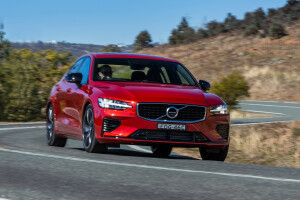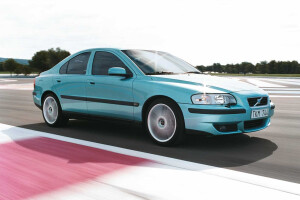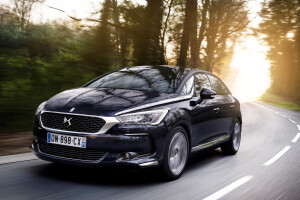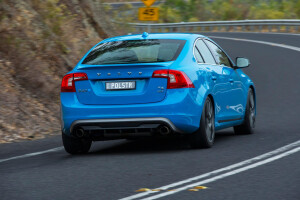Latest Review

If sedans are a dying breed, no-one told this trio
We pitch the reborn Peugeot 508 GT against the new Volvo S60 T5 and fine Kia Stinger GT-line
EVOLUTION, biologist Charles Darwin first proposed, is key to survival. Either adapt to change, or die.
With hatches, SUVs and, lately, dual-cabs squeezing medium and larger sedans inextricably towards oblivion, creating yet another Camry clone nobody wants no longer cuts it.
Peugeot finally gets it with the latest 508 – a front-drive mid-sizer so utterly different from its dowdy, underperforming predecessor that surely a new name is deserved. Shorter by 42mm, 53mm lower and lighter than the 2011 original nobody remembers, it breaks convention with a far sleeker silhouette, frameless doors, a tailgate and a fiercely bold interior. A switch to the company’s lightweight tech-heavy EMP2 platform enhances the makeover’s cred.
Inevitably there is a price to pay for such progress. From $53,990 before on-road costs, the 508 GT Fastback rises some $10K over the Volkswagen Passat 132TSI Comfortline that the old bus bumbled behind, but is also a similar amount under the popular Mercedes C200, placing it in a sort of ‘premium-economy’ no-man’s land. Is Peugeot deluded, or is it an Audi A5 Sportback from Sochaux?
We’ll see, but in the meantime, the French fastback is chock-full of features, with few options, to help overcome sticker shock, including stop/go adaptive cruise, auto parking, adaptive dampers, Nappa leather, massaging electric front seats with heating, and a gesture-activated tailgate. Strangely, though, no rear cross-traffic alert. And the engine’s a downsized 165kW 1.6-litre turbo.
Brand spanking, too, is the Volvo S60, now in its third generation and also gunning to reverse a long-term sales decline. For decades, from the Amazon and 240 to the 850 and S70 that came before, the so-called Swedish Holden was all about the sedan, so it’s no surprise that the now American-made (and focused) series is sticking with convention. This time around, it echoes the styling of the larger S90 (albeit with a kinked hip to keep things interesting), and adopts enough upscale XC60 tech (sharing the scalable SPA underpinnings including its Haldex-supplied all-wheel-drive system) to give the formal four-door some premium cache.
Ours is the entry T5 AWD Momentum, starting from a keen $54,990; an Audi A4 quattro equivalent is north of $70K. And while this S60 misses most of the 508 GT’s aforementioned kit, there’s AWD, Volvo’s leading safety engineering ethos, a 400cc-larger engine and a posh badge. We’re not talking mere trinkets here.
Based on the Genesis-range platform and shared with the marque’s new G70 (Hyundai’s BMW 3 Series chaser), the likeable Kia Stinger, too, sports a 2.0-litre turbo-petrol four. A courageous statement for an economy-car brand, the Stinger evolves the American rear-drive sedan template that formed the backbone of our now-deceased car-manufacturing industry, and so is the closest thing we have to a Holden VF Commodore successor. Complete with the choice of six-cylinder power. Why more Aussies haven’t embraced this lauded low-slung liftback is a mystery.
Except we’ve chosen the GT-Line from $56,290 with its 182kW turbo 2.0L rather than the hammering 272kW 3.3-litre twin-turbo V6, though there are cheaper ‘S’ versions of both (in $47K 200S and $50K 330S flavours). However, they lose the GT-Line’s vented/heated front seats, toasty steering wheel, head-up display and standard sunroof, as well as the 508-matching adaptive dampers, blindspot detection (BSD), front sensors, 360-degree camera, auto high beams, front bending LEDs, driver’s memory seat function, high-end audio, smartphone charging and more, making the jump to GT-Line worthwhile. BSD excepted, almost all of these items cost extra in the entry-level S60.
A trio of four-pot turbos, then, but with their eight-speed torque-converter autos differing on which wheels to drive. If nothing else, the modern mid-sized sedan market is no longer mundane.
Obviously, the Peugeot has its work cut out, with just 1598cc. Its BMW co-developed Prince engine just doesn’t have the cubic inches so feted by Aussies. However, what it lacks in size is made up for in smarts, since at 1430kg the 508 weighs hundreds of kilos less than the Stinger at 1731kg and the S60 at 1802kg, an advantage it ably exploits.
Eager off the mark with the least amount of lag, and punchy through the gears thanks to a tight set of ratios from the Toyota-supplied auto ’box, the sweet-spinning 1.6T feels – and sounds – up to the task of taking on the 2.0Ts, gaining speed rapidly and reacting to throttle inputs with instant, sizzling conviction. We even eclipsed Peugeot manufacturer PSA’s 0-100km/h claim by 0.4sec, the GT’s 7.7sec reflecting the car’s muscular flexibility. And while a second shy of the soaring S60, in the crucial 80-120km/h the 508 was just 0.2sec off and pulled ahead of the Kia. Only approaching 140km/h does the Pug’s limited capacity show, the French sedan falling behind both rivals by some margin. Otherwise, the lively 508 sizzles and sprints with surprising vigour, yet is also commendably muted and refined as required. Go France!
The 300kg-plus porkier Stinger demands a determined pedal prod to hustle – and finds no assistance from the auto’s lacklustre tune. It’s also comparatively vocal in Sport, due to a fake exhaust resonance droning away. However, once the tacho rises past 3000rpm, the 2.0T really hits its stride, reacting to the right foot without delay. Of its five driving modes – snoozy Eco, languid Comfort, driver-adaptive Smart, owner-configurable Custom and ‘Okay, I’m on!’ Sport – only the latter is up for a fang. Remember, though, that the twin-turbo V6 for forays into the 5.0sec sphere is but a tick-box away.
If the 508 is brisk and the Kia cruisy quick, then the S60’s performance is hungriest across the spectrum, its turbine-like power delivery reeling in the scenery with effortless ease, even from low revs. Not the most melodic of engines, the T5 nevertheless offers immediate, impressive responses, coming across downright rapacious in Dynamic mode, no doubt aided by the eager and slick auto gearbox. Quite an achievement given the Volvo’s nearly 400kg weight disadvantage over the Peugeot.
Ours was saddled with the fewest kilometres of the three cars on test, so fell short of Volvo’s 6.4sec claim to 100km/h by 0.3sec, but a few more clicks should fix that, meaning the figures should match the stirring seat-of-the-pants feel that’s palpably evident the moment you set off in the Gothenburg hot rod.
Though all three deliver a broadly similar performance experience, the Peugeot’s efficiency is revelatory, returning easily the lowest fuel consumption. A nod to the 508’s supermodel diet: achieving an 8.9L/100km average against the S60’s 10.1L and the GT’s 10.7L while being thrashed is quite the accomplishment.
Here’s another. Keen drivers will also likely revel in the Pug’s nimble dynamics, with those EMP2 underpinnings and the newly featured adaptive dampers enabling the 508 to bring a wider bandwidth of capability to explore and enjoy.
Let’s start in Sport mode. Sharp, fluid and full of feel, the steering provides the type of fast, flowing handling that you can really connect with on a favourite ribbon of road, backed up by a neutral cornering attitude displaying minimal understeer. No doubt quality Michelin Pilot rubber helps with grip and control here. A real livewire, then, the GT offers a painless stepping stone from hot hatch to family hack should life dictate.
Conversely, while a level of firmness remains in everyday Normal mode, Comfort introduces a level of plushness classic French car owners would appreciate – as well as associated bodyroll through tighter turns. Great for isolating yourself from the rough and tumble of decaying urban roads. That’s the rich tapestry of choice the 508 offers; having your cake and eating it too. Germany, take note.
After the Peugeot, the Volvo feels markedly detached. The steering is light and easy, without bothering to involve the driver with information overload, while the handling remains accurate and assured in most scenarios, turning in smoothly if a little wide and loose when hurried. However, even minor bumps upset ride comfort, with the taut suspension transmitting stuff through to the inside despite the T5 wearing the smallest wheels. Switching over to Comfort from Dynamic merely takes the edge off the throttle response. Disappointing.
Doubtless over wet or greasy roads its AWD hardware would transform the S60 into the most confident cornerer of the lot but, as it stands, the Volvo is just a little too remote and unsettled to be engaging or comfortable. For serenity, we prescribe stretching to the $2400 Versatility Pack with air suspension.
Aping the Peugeot with adaptive dampers, the Stinger’s ride is remarkable given its 19-inch alloys, while the steering is marvellously weighted, keen and balanced, but it, too, lacks meaningful tactility. At least drivers can revel in the chassis’ inherent poise and control, bringing fast and fun roadholding combined with pleasing levels of suspension discipline. But, as with the Volvo, pushing the Kia harder can see it become a little ragged and unruly. Maybe it’s a mass thing.
The Stinger’s larger size pays dividends inside, with ample space up front and reasonable rear-seat room. All outboard seat comfort rates highly, the driving position is agreeably sporty and the dash design is nicely executed. The Kia walks a fine line between form and functional practicality. Some of the switchgear is scattered, though, and the multimedia system looks dated and some trim quality is off the pace. But otherwise, with lots of pleasing detailing to discover, the interior remains quite a special place to be. We’re talking about a Kia, remember.
No bombshell to learn that the S60’s cabin is the most spacious, solid and elegant, brandishing a look and feel from the luxury class above, backed up by fine front seats, the roomiest rear and a sense of real craftsmanship in the switchgear. That said, the portrait tablet-style touchscreen interface is fiddly on the move; the Momentum’s ambience is too sombre in this company; the rear cushion is a little short on support, and there’s persistent road-noise intrusion, undermining Volvo’s positioning somewhat.
If the S60 is uptown conservative, the 508’s cabin is architectural, futuristic, minimalist and chic. Fit for a Citroen, in fact. Expansive, electronic and audacious, it demands familiarisation and an open mind, yet remains friendly and inviting. The low-wheel/high-instrument layout may not please everybody, but the materials are modern and lovely. Control placement is logical, seating is comfy yet supportive, storage is sufficient, there’s ample legroom out back and cargo capacity is the best on test. Foibles include tight rear-seat accessibility, limited headroom back there, a stubborn engine-start button and poor rear vision (like the Stinger), but overall, the quality, useability and execution of the Peugeot’s interior matches the visuals. Who’d have predicted that?
In fact, almost everything about the 508 challenges preconceptions about larger French cars and their competitiveness. Indeed, though adventurous, the GT is actually a return to old brand virtues of leading driveability, comfort, efficiency, value and practicality, and that’s something we haven’t seen since the 406… hell, maybe even the legendary 504.
The Volvo, in contrast, is more of the same – solid, stolid engineering, just cleverly updated for the 2020s. But despite being speedy, safe and secure, the S60 lacks the rounded refinement and dynamic appeal of the brand’s better SUVs like the XC60.
It may finish third, but the Stinger GT-Line provides verve and panache in a generously specified and rewarding driver’s car that also works beautifully as a big family sedan. Yes, it needs more polish, but we’re glad Kia has had the guts to develop a car so suited to traditional Aussie motorists’ tastes. It deserves much wider success. Just pick the V6 instead.
So, neither the Stinger nor the S60 look forward quite as courageously as the latest, high-flying 508. If any model can save the embattled medium sedan, it’s the evolved Peugeot fastback.
INSIDE LINE
Generic Kia switchgear and dated multimedia don’t diminish spacious Stinger’s racy appeal, with an excellent driving position, welcoming dash, cushy seating, and heaps of storage and gear. Choosing Sport mode squeezes driver’s seat bolsters. Shallow back glass limits already-poor rear vision, and wind noise can be intrusive. Back seat is family-fit, though cargo capacity is a smallish 406L despite liftback, extending to 1114L. Spare is a space-saver.
Lavish and loaded, 508 brings best iteration yet of Peugeot’s ‘i-Cockpit’ dash, though high-dials/low-wheel layout not to everybody’s taste. Full electronic instrumentation offers pleasing configuration choices. Touchscreen can get confusing. Pleated seating adds to ambience, front space is ample but rear headroom suffers due to fastback styling. Big tailgate reveals 487L cargo capacity, stretching to 1537L for wagon-like practicality. Space-saver spare.
Familiar fare aligns S60 with XC SUVs, with pleasing results, even if Momentum spec is a bit dour. Roomiest on test. Firm front seats are supportive, sturdy dash exudes quality, but portrait touchscreen requires familiarisation. Push-button rear headrest folds reminiscent of old Benzes. Nice. Gear lever brings Tiptronic-style control instead of paddles. Rear seat is a bit short, and where’s the in-built child seat? Conventional boot swallows 442L. Space-saver spare.
HYBRID FIREPOWER
Both the S60 and the 508 offer petrol-electric hybrids, though only Volvo’s is currently available. From $85,990, the T8 flagship employs a supercharged 246kW/430Nm 2.0-litre, paired to a 65kW/240Nm motor. Combined outputs soar to 311kW/680Nm for 4.3s to 100km/h. 50km of pure EV driving is possible, as is 2.0L/100km average in combined mode. Expected in the EU by 2021, Peugeot’s hybrid in Sport Engineered guise, using a 1.6-litre turbo/electric motor set-up, makes 294kW/500Nm but matches the Swede’s exemplary acceleration and economy efforts due to its lightness.
News
-
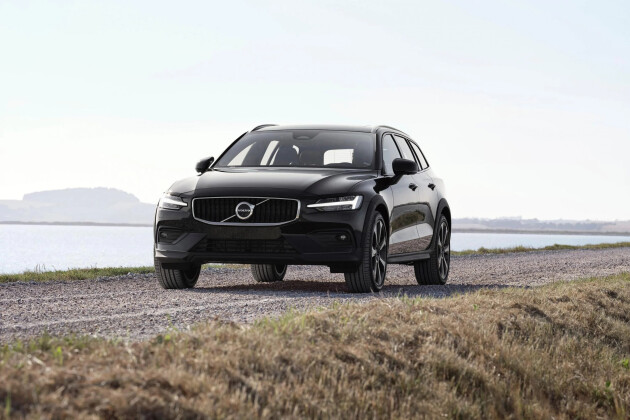 News
News2023 Volvo S60, V60 Cross Country updates set for mid-year arrival
The new financial year will see Volvo roll out its refreshed sedan and wagon
-
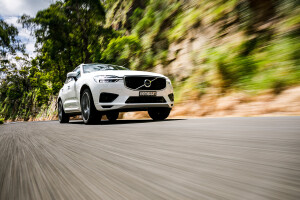 News
NewsVolvo sets Australian sales record but 10,000 target in doubt
The Swedish marque has achieved record growth, but still looks set to miss its goal for the year
-
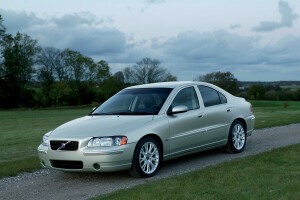 News
NewsVolvo recalls 2004-2009 S60 and S80 models over fault with airbag inflator
Almost 1500 cars from the noughties are now under notice in Australia as part of a global issue
-
 News
NewsVolvo forced to recall over 450,000 vehicles worldwide after airbag death
An incident in the United States has sparked a worldwide recall
-

Volvo issues recall for 2019 - 2020 models over fuel system
-
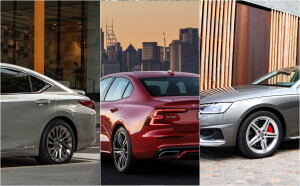
Australia's Best Value Cars 2021: prestige car
-

Volvo Australia recalls 9205 cars
-
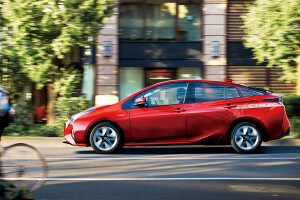
Australia's Best Hybrids



